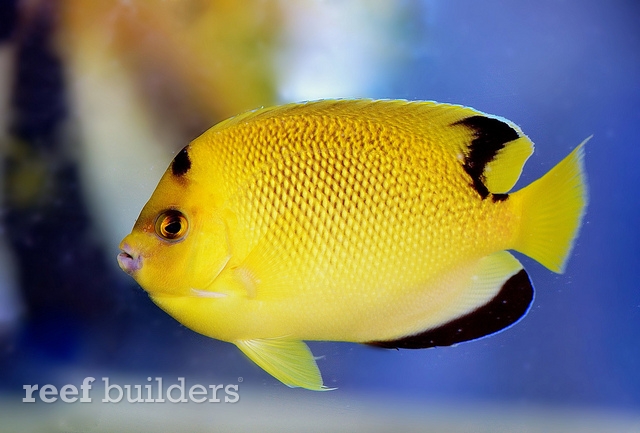Apolemichthys is one of seven angelfish genera that are ever popular in the aquarium trade. The genus encompasses some of the age old aquarium favourites such as the flag fin angelfish (A. trimaculatus), bandit angelfish (A. arcuatus) as well as the gold flake angelfish (A. xanthopunctatus). Like many of the angelfish genera, Apolemichthys is not naive to the experiments of inter-species cross overs, and they do produce a fair number of beautiful hybrids.
Of which, Apolemichthys trimaculatus is the easy going promiscuous playboy of the genus, and is responsible for forming majority of the hybrids. Hybrids such as A. trimaculatus x A. kingi, A. trimaculatus x A. xanthopunctatus and A. trimaculatus x A. xanthurus are some of the documented examples. The last example is one we will be exploring today, as seen by this individual here.

The armitagei angelfish was once believed to be a valid species within the Apolemichthys genus, but was later regarded to be a hybrid between A. trimaculatus and A. xanthurus. This love child between the flag fin and the cream angelfish can be found wherever the two species overlaps, and is occasionally exported out of the Indian Ocean.
As with all hybrids, the offspring is highly variable and can appear on each end of the flag fin vs cream angel spectrum. In some specimens, a stronger genetic influence of A. xanthurus will yield a dusky “dirtier” looking specimen, while in some the stronger genetic influence of A. trimaculatus will yield a very yellow and clean looking hybrid. This individual here is a rather nice blend of two parents, with traits not skewed in a particular direction of either species.
Although the armitagei hybrid is the most often seen hybrid in this genus, it cannot be considered common. To say it is rare is also a little bit of a stretch, as it does make an appearance periodically. The one other hybrid in this genus that does not involve A. trimaculatus is one between A. griffisi and A. xanthopunctatus, and that particular cross is exceedingly rare.



